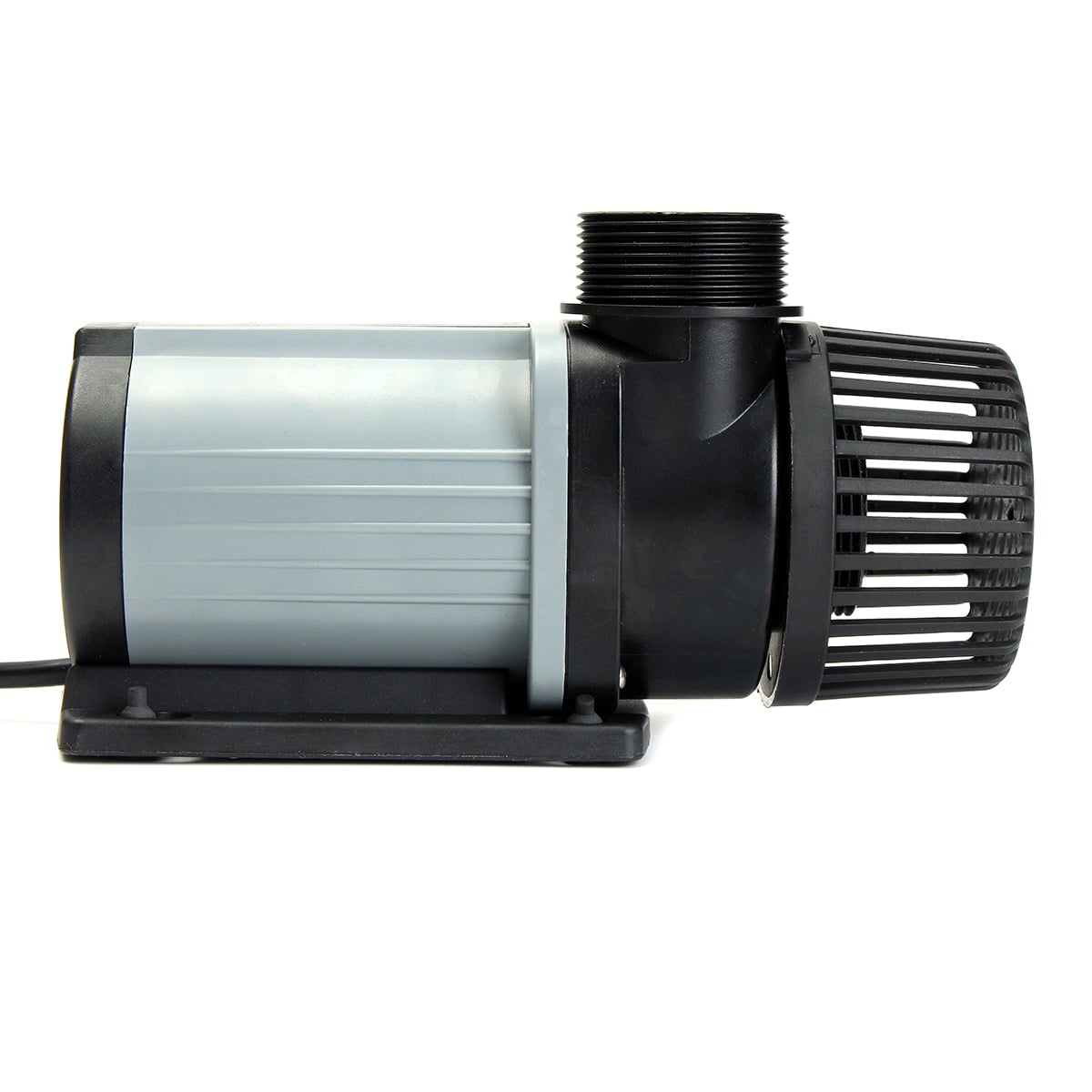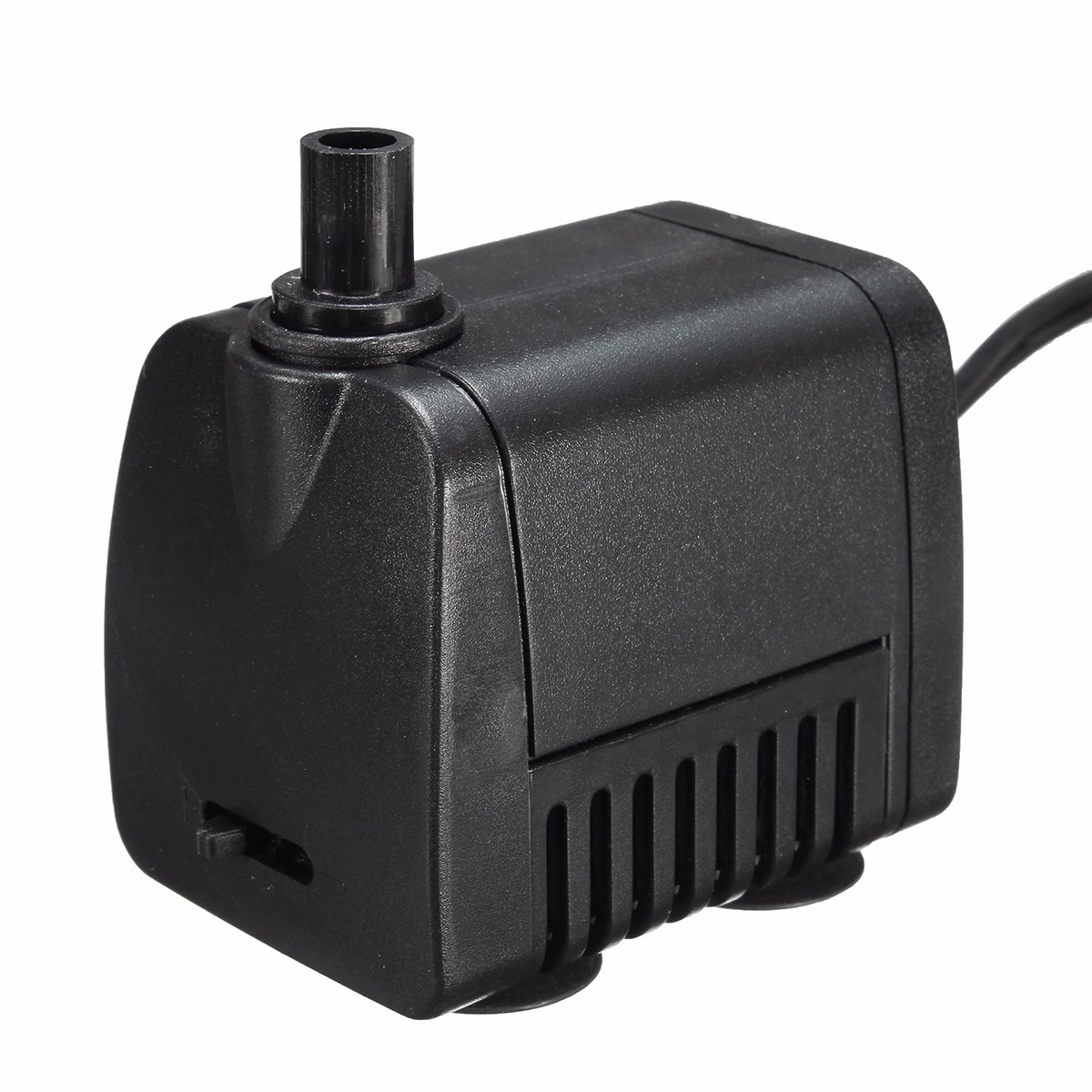

Therefore, when you turn on the pump in the springtime, you may be vulnerable to electric shock. You may not notice the cracks due to the multilayers of the casing.
Submerge pump for water fountain crack#
Just one freeze can cause the casing or the cabling to crack open, exposing the electrical parts. As a result, the water in a natural pond or water garden may stay frozen throughout the season.įrozen water can take its toll on a submersible water pump. Winters in Illinois produce frigid temperatures that can plummet below zero. Freezing Temperatures During the Winterĭuring the winter, it is a good idea to remove the water pump from your water garden or natural pond. Therefore, if you use an electric pump, you must make sure that you plug it into a GFCI receptacle or replace your old outlet. It can also increase the risk of electric shock. As a result, plugging an electric water pump into a regular outlet can make it vulnerable to a power surge. Unfortunately, many older homes do not have GFCI receptacles. GFCI receptacles prevent electrocution by cutting off the power source when an unusual increase or “leakage” in power, like that caused when water comes into contact with electricity, is detected. These areas include bathrooms, kitchens, utility rooms, garages, and anywhere outside.
Submerge pump for water fountain code#
GFCI Receptaclesīoth the National Electric Code (NEC) and OSHA require that all homes now contain GFCI receptacles in areas where water exists or potentially exists. If the seal cracks, water might get into the cable.

This seal will not fail unless it is subjected to some form of impact that would cause it to crack.

They also wrap the cables in a neoprene, which is both air and watertight.Įpoxy is incredibly effective at forming a waterproof seal. For instance, they will fill gaps with epoxy to prevent water from invading the unit. Like the main components of the pump, manufacturers go to great lengths to properly seal the cables. The result of this malfunction would be electrified water inside the pond. A tiny malfunction can bring the inside of the pump into contact with the water garden or natural pond water. While this produces a high level of insulation, occasional seal failures can occur. The seal insulates the inside of the pump from water, humidity, and outside air. Instead, they form the seal due to a crimping method that tightens components within the pump. The rubber water seals on a submersible pump contain no adhesive. However, both the casing and the rubber shielding does not guarantee that the submersible water pump will never have any contact with water. All cables are shielded and sealed by standard rubber. For instance, they encase them in cast-iron housing designed to isolate the electrical and working parts of the unit. Manufacturers design submersible pumps to be safe. As such, installing an electric submersible water pump for water gardens, natural ponds, or pools requires great skill and experience to avoid electrocution. The problem is simple: electricity and water do not mix. Despite their ground-ready, durable and insulated construction, submersible water pumps still present severe hazards for homeowners and should never be used in ponds meant for swimming or human immersion.


 0 kommentar(er)
0 kommentar(er)
